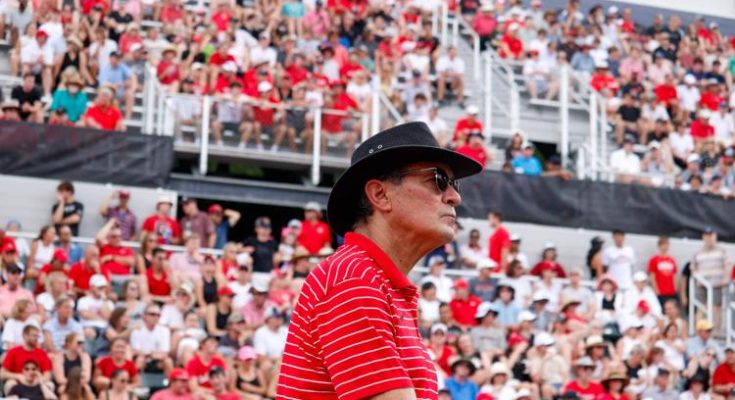It’s a moment years in the making—a celebration not just of wins, trophies, or Grand Slam appearances, but of legacy. For the University of Georgia and the broader tennis community, the enshrinement of Manuel Diaz and John Isner into the Intercollegiate Tennis Association (ITA) Hall of Fame signifies the culmination of decades of influence, success, and the indelible mark left by two of the sport’s most cherished figures. This recognition isn’t just about two men; it’s about an entire era of Georgia Bulldogs tennis that was built on discipline, leadership, and relentless pursuit of greatness. Together, Diaz and Isner represent the very best of collegiate tennis—one as the architect, the other as the embodiment of a dream fulfilled on the court.
Manuel Diaz’s tenure as head coach of the Georgia Bulldogs men’s tennis program is legendary, not only within the halls of UGA but across the entirety of college athletics. Since taking over the head coaching role in 1989, Diaz has transformed the Bulldogs into a perennial powerhouse. His resume reads like a fairy tale for any aspiring coach: four NCAA national championships, two ITA National Team Indoor titles, 28 Southeastern Conference (SEC) titles, and more than 770 dual match victories. But the numbers only tell half the story. Diaz’s impact was deeply human. His players weren’t just athletes; they were students, leaders, and in many cases, future professionals molded under his mentorship. His ability to develop raw talent into elite competitors while maintaining a focus on academic integrity and personal development was rare. And now, after decades of shaping young men both on and off the court, the ITA has acknowledged what the tennis world has known for years—Manuel Diaz belongs among the greats.
John Isner’s story, while deeply connected to Diaz, unfolded differently. A towering presence at 6-foot-10, Isner took the college tennis world by storm during his four-year career at Georgia from 2003 to 2007. His serve quickly became the stuff of legend, but his competitive fire and commitment to the program made him a beloved figure in Athens. Isner led the Bulldogs to the 2007 NCAA team championship, closing out his college career on the highest possible note. He was named an All-American all four years and holds multiple program records, including most career wins in singles and doubles. Yet, what makes Isner’s Hall of Fame induction even more profound is how his impact extended beyond college tennis.
After graduation, Isner embarked on a professional career that saw him climb as high as No. 8 in the ATP world rankings. He became a fixture in the second week of Grand Slams, captured 16 career titles, and left a historic mark with the longest match in tennis history—an 11-hour epic against Nicolas Mahut at Wimbledon in 2010. Through it all, Isner never forgot where he came from. He regularly spoke of his time at Georgia as foundational to his success and remained a strong advocate for college tennis even at the height of his pro career. His journey from Athens to global recognition is the type of arc that sports fans dream about—and now, it comes full circle with his induction alongside the coach who helped guide his path.
Their simultaneous induction speaks volumes. This isn’t just a celebration of a player and a coach—it’s a narrative of unity, trust, and shared goals. For Diaz, seeing one of his most iconic players reach the pinnacle of recognition beside him must be one of the most emotionally rewarding moments of his career. And for Isner, being inducted with the man who believed in him from the beginning solidifies the mentorship that was foundational to his rise. It’s rare to see this kind of symmetry in sports, where the mentor and the protégé are honored together, reinforcing the values of loyalty, respect, and shared excellence.
The ITA Hall of Fame ceremony promises to be more than just a formality. It’s expected to be an emotional gathering of generations of Georgia Bulldogs players, fans, and college tennis supporters. Tributes have already started pouring in from across the tennis community, with former players, rivals, and analysts recognizing the enduring significance of Diaz’s and Isner’s achievements. Many have pointed out how Diaz’s coaching philosophy set the standard for consistency and discipline, while others celebrate Isner for proving that college tennis can be a legitimate stepping stone to a successful professional career.
Their induction also comes at a time when college sports are experiencing unprecedented changes. The rise of NIL deals, the transfer portal, and debates around amateurism have reshaped the landscape. In that context, the legacy of Diaz and Isner offers something steady and enduring—a reminder of what college athletics can represent at its best. Diaz built a culture rooted in teamwork and accountability, while Isner’s path showcased how collegiate tennis could mold champions ready to succeed on a global stage. These values are needed now more than ever as the sport looks to maintain its integrity amid rapid evolution.
For the University of Georgia, the honor extends beyond tennis. It’s a proud moment for the entire athletic department and university community. Athletic Director Josh Brooks called the dual induction “a watershed moment for Georgia Athletics” and lauded both Diaz and Isner for “representing the University with class, humility, and a relentless drive to be the best.” UGA President Jere Morehead echoed similar sentiments, noting that both men have “carried the banner of Georgia across the globe with distinction.”
This honor also reaffirms Georgia’s status as a national tennis power. The program’s ability to produce both elite coaches and world-class players speaks to its infrastructure, vision, and unwavering support from the university and alumni. And for future recruits, this moment sends a powerful message: If you choose Georgia, you’re stepping into a tradition of excellence that has been built by legends and continues to be sustained by those who wear the red and black with pride.
As Diaz steps into retirement after more than three decades of coaching, the timing of the induction couldn’t be more appropriate. It offers a moment of reflection—not just for him, but for all those he’s touched along the way. From assistant coaches to players who never went pro, the outpouring of gratitude is immense. They remember a coach who pushed them to their limits but always had their back, who celebrated their victories and held them accountable through losses. His Hall of Fame plaque may be inscribed with stats and championships, but the real legacy is in the countless lives he helped shape.
Meanwhile, Isner’s transition into post-playing life continues to draw admiration. He has already begun mentoring young players and hinted at potentially returning to the college game in a developmental or ambassador role. His passion for the sport remains undimmed, and his induction provides a fitting bookend to a career that began on Georgia’s hardcourts and culminated with acclaim across the tennis world. His presence continues to inspire the next generation of American players who now see college tennis not as a detour, but as a direct path to greatness.
As they stand side-by-side in enshrinement, Diaz and Isner become more than just Georgia Bulldogs legends. They become a symbol of what college tennis can achieve when talent meets leadership, and when commitment is matched by vision. Their names will now be immortalized in the ITA Hall of Fame, but their real legacy lies in the stories still being written by those who follow in their footsteps.
This induction is not the end of their story; it’s a permanent stamp on a legacy that continues to echo through every Georgia tennis match played, every recruit who walks into the program, and every fan who watched them build something lasting and meaningful. From the courts of Athens to the hallowed halls of the ITA, Manuel Diaz and John Isner are now forever enshrined where they have always belonged—among the legends of the game.



